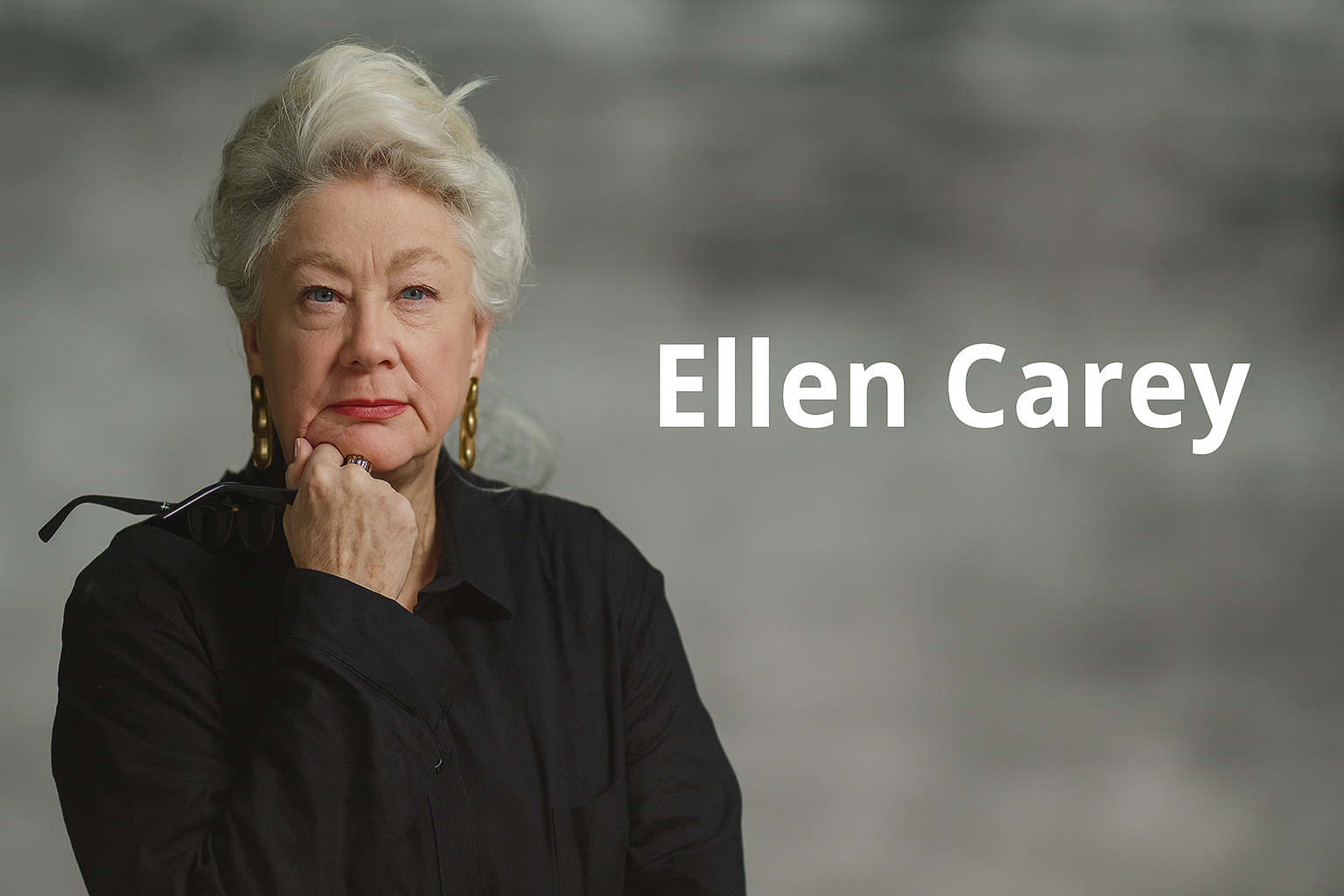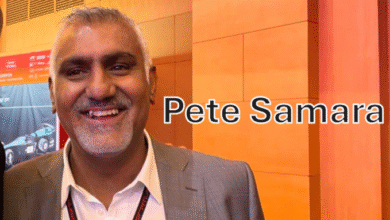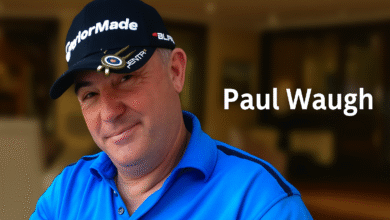Ellen Carey: The Visionary Who Redefined Photography Through Light and Abstraction
A Journey Through Ellen Carey’s Experimental Photography, Teaching Legacy, and Impact on Contemporary Art

Introduction
Ellen Carey is an American experimental photographer, educator, and scholar whose boundary-breaking work has redefined the very essence of photography. Known for her abstract Polaroid creations and cameraless photograms, Carey uses light, color, and process to create images that challenge conventional expectations. Her work is not about capturing reality—it’s about reimagining it.
With a career spanning over four decades, Carey stands at the intersection of art, science, and theory. She transforms the photographic medium into an expressive language of form and sensation. From the darkroom to the classroom, her contributions continue to influence generations of artists, curators, and thinkers across the globe.
Quick Bio
| Attribute | Details |
|---|---|
| Full Name | Ellen Carey |
| Birth Year | 1952 |
| Birthplace | New York City, United States |
| Nationality | American |
| Profession | Experimental Photographer, Educator |
| Education | BFA (KCAI), MFA (SUNY Buffalo) |
| Known For | Polaroid Pulls, Photograms, Color Theory |
| Current Role | Professor at Hartford Art School |
Ellen Carey’s Early Life and Education
Foundation of Creativity and Visual Exploration
Ellen Carey was born in 1952 in New York City. She grew up in a Catholic family, often inspired by the stained-glass colors of churches—sparking a lifelong fascination with light and color. Her early exposure to visual storytelling became the foundation for her abstract and innovative photography.
Her childhood curiosity in how things appear under different lighting conditions greatly shaped her perspective. This innate passion evolved into a rigorous academic pursuit, ultimately transforming her into a trailblazing figure in the realm of photography.
Academic Path and Artistic Exposure
Carey pursued art seriously from a young age, first studying at the Art Students League of New York. Later, she earned a Bachelor of Fine Arts from the Kansas City Art Institute in 1975 and completed her MFA in Photography at SUNY Buffalo in 1978. It was at SUNY that she entered the avant-garde scene, studying alongside artists like Cindy Sherman.
During this time, she began experimenting with conceptual self-portraits that would become foundational to her later work. Her academic path gave her both technical mastery and conceptual clarity—blending theory and practice seamlessly.
Beginning of Her Artistic Career
The Rise of Experimental Portraiture
Carey’s early work involved black-and-white photographic self-portraits enriched with painted details and experimental lighting. These pieces were highly expressive and abstract, diverging from traditional forms of photography. She quickly gained recognition for her unique vision.
This series stood apart because it didn’t merely document her appearance—it interpreted her state of mind and creative process. Her portraits were psychological landscapes painted with light and emotion, laying the groundwork for her shift into abstraction.
The Buffalo Influence and Early Exhibitions
Buffalo’s avant-garde culture played a pivotal role in Carey’s artistic evolution. Her early self-portraits debuted at prominent venues like Hallwalls and PS1’s The Altered Photograph exhibit. This marked the beginning of her public career in conceptual and experimental photography.
The vibrant and collaborative community in Buffalo encouraged her to push boundaries. With the support of peers and exposure to cutting-edge discourse, Carey began to view photography as a vehicle for challenging visual norms.
Signature Works and Techniques
Polaroid 20×24 and the Birth of “Photography Degree Zero”
In the 1980s, Carey began working with the rare Polaroid 20×24 camera. She created iconic “Pulls” and “Rollbacks,” focusing on abstraction and color instead of figurative content. She coined the term “Photography Degree Zero” to describe her minimalist approach to the photographic process.
Her manipulation of instant film not only resulted in stunning visual effects but also subverted expectations of what a photograph should be. These works focus less on what is seen and more on the act of seeing—on the interaction between viewer, process, and material.
From Representation to Pure Process
Rather than capturing moments or objects, Carey explored the essence of light, time, and material through photography. Her images lacked traditional subjects, allowing the medium itself to take center stage. Her Polaroid work is now considered a hallmark of abstract photography.
Through physical engagement—ripping, rolling, and crumpling—Carey blurred the line between image and object. This approach helped elevate photography from a passive recording tool into a medium of expressive, tactile potential.
Cameraless Innovation – “Struck by Light”
Embracing Photograms
Carey’s Struck by Light series, beginning in 1992, represents a revolutionary shift toward cameraless photography. By folding or crumpling photographic paper and exposing it to controlled light, she produced vivid, sculptural photograms that defied expectations.
Her darkroom became a performative space where light, paper, and chemistry collided to form bold visual abstractions. In doing so, she emphasized that meaning in photography could emerge from pure form and process—without relying on traditional imagery.
Signature Series and Color Play
Her cameraless series include Dings & Shadows, Caesura, and Zerograms. These pieces often involve bold use of color and structure, aligning her work with color-field painting and other visual art movements. Carey elevates process over product in all these creations.
Each piece is both accidental and intentional, formed through precise timing and spontaneous light interaction. Her choice of vibrant palettes and kinetic forms helps the viewer experience light as something felt rather than simply seen.
Academic and Scholarly Contributions
Teaching at Hartford Art School
Since 1985, Ellen Carey has served as a professor at the Hartford Art School, University of Hartford. She has influenced generations of photographers, pushing them to embrace innovation and break boundaries in their creative process.
Carey’s dedication to teaching is rooted in mentorship and intellectual engagement. She helps students understand photography not just as a technique but as a medium for expressing complex ideas and reimagining the world.
Writing as “Pictus & Writ”
Carey’s intellectual contributions include essays on color theory, experimental photography, and women in art history. Under the pen name “Pictus & Writ,” she has written extensively on figures like Anna Atkins, Sol LeWitt, and Man Ray, bridging photography with broader art discourse.
Her writing contextualizes her practice within both historical and theoretical frameworks. She brings attention to under-recognized figures in photographic history and adds depth to contemporary conversations around visual culture.
Exhibitions and Global Recognition
Featured in Prestigious Collections
Carey’s work is held in major collections such as the Metropolitan Museum of Art, Centre Pompidou, SFMOMA, and the Smithsonian American Art Museum. These institutions affirm her role as a major figure in contemporary photography.
Being collected by such prominent institutions ensures that her work remains influential for future generations. It also validates her experiments as not just radical but foundational to the evolving story of photography.
Awards and Impact
She was named one of the Royal Photographic Society’s “Hundred Heroines” in 2019. Grants from the NEA, the Andy Warhol Foundation, and the Polaroid Artist Support Program further highlight her artistic and academic impact.
These honors are recognition not just of her artistic skill but of her intellectual and pedagogical contributions. Carey has helped redefine what it means to be a photographer in the 21st century.
Latest Developments and Legacy
Recent Retrospectives and Recognition
Carey’s retrospective Struck by Light (2023–24) at the New Britain Museum of American Art and her exhibition at the Fox Talbot Museum in the UK marked her largest solo surveys to date. These shows placed her photograms and Polaroids in direct dialogue with historic photographic pioneers.
They highlighted the timelessness of her innovations and how her work bridges the 19th-century origins of photography with contemporary abstract expression. These exhibitions solidified her position as a transformative figure in the field.
Lasting Influence on Contemporary Photography
Through her dual practices of Polaroid abstraction and cameraless photograms, Carey challenges viewers to reconsider what photography can be. She continues to inspire artists, students, and scholars to explore the medium’s conceptual and material limits.
Her legacy is that of a visual philosopher—an artist who not only creates but also questions, teaches, and advances the discipline. Ellen Carey’s name will remain central in discussions of experimental art and the future of photography.
Conclusion
Ellen Carey’s legacy is one of fearless innovation and artistic inquiry. She has moved photography beyond the lens, creating a visual vocabulary built from abstraction, light, and conceptual depth. Her Polaroid Pulls, photograms, and scholarly writings not only challenge traditions—they invite us to see photography as a transformative experience.
As a teacher, curator, and thought leader, Carey has left an indelible mark on contemporary art and photographic practice. Her work continues to resonate across museums, academic institutions, and creative communities, proving that photography, when liberated from its boundaries, can become pure imagination.
Frequently Asked Questions (FAQ)
What is Ellen Carey best known for?
Ellen Carey is best known for her abstract photography using Polaroid Pulls, Rollbacks, and cameraless photograms in the Struck by Light series.
What is “Photography Degree Zero”?
It is a term Carey uses to describe her minimalist, process-based Polaroid works that strip photography down to its basic elements of color and light.
Where does Ellen Carey teach?
She is a long-standing photography professor at the Hartford Art School, University of Hartford.
What institutions have her work in their collection?
Her work is held in the Metropolitan Museum of Art, Whitney Museum, Centre Pompidou, SFMOMA, and many other leading museums.
How does Ellen Carey contribute to photographic theory?
She writes essays on photographic history, color theory, and experimental practice under the pen name “Pictus & Writ.”



